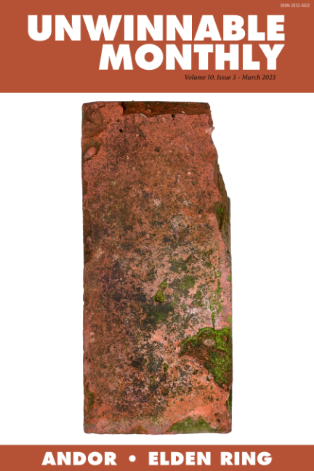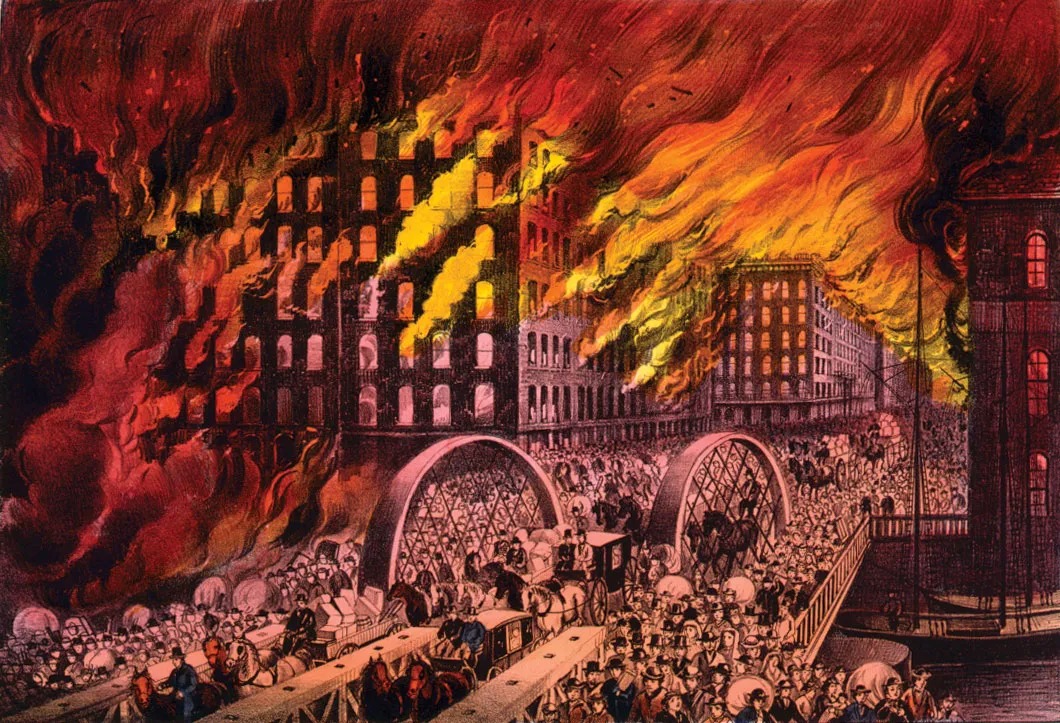
A New Era

This column is a reprint from Unwinnable Monthly #161. If you like what you see, grab the magazine for less than ten dollars, or subscribe and get all future magazines for half price.
———
Architecture and games.
———
I put a lot of hours into the city builder Pharaoh back in the day, something which may or may not have influenced my decision to become an Egyptologist later in life. When I heard about a remastered version called A New Era, I was naturally intrigued and immediately decided to give the game a go.
You can’t go very long in city builders without running into a natural disaster like an earthquake or a flood. Since you have to build up their level over time, houses in Pharaoh basically start out as nothing more than shacks, meaning of course that within about an hour of playing the game, I found my settlement crumbling on account of a seemingly unquenchable fire. While this was definitely bothersome, I couldn’t stop thinking about how fires are frequently a source of positive change in the real world, at least from an historical perspective. They often pave the way for better things in terms of safety measures and quality of construction. I’ve seen this repeated countless times over the years and the argument certainly holds, but at the same time, fires are still, well, destructive. They’ve always been substantial disturbances, most notably for working class families. You can see what I mean by spending some time studying Chicago.
The Great Chicago Fire was a devastating event that caused significant destruction and loss of life. The fire burned for a total of three days, destroying over 17,000 buildings and leaving more than 100,000 people homeless. The majority of the city was affected with the most significant damage occurring in the working-class neighborhoods on the west side of Chicago.
The fire started on the evening of October 8, 1871, inside of a barn located in the southwest corner of the city. The flames quickly spread on account of strong winds and the prevailing dry weather conditions. The fire was first noticed by Catherine and Patrick O’Leary, a pair of recent immigrants and owners of the barn where the blaze began. They were just one of many working-class families in Chicago struggling to make ends meet. While the cause of the fire has long been attributed to a cow knocking over a lantern, the actual cause remains completely unknown.
As the fire spread, the flames quickly reached the areas near the farm belonging to Catherine and Patrick O’Leary, parts of the city where the buildings were made of wood and closely packed together. The flames rapidly consumed these wooden structures, making the fire practically impossible to control. People frantically tried to evacuate their homes and businesses, but many were trapped inside, unable to escape the raging inferno. The firefighters who responded to the blaze were soon overwhelmed, leaving their efforts to put out the flames largely futile. The problem was exacerbated by a series of misdirections during dispatch and woefully inadequate equipment including broken pumps and leaky hoses.

The flames continued to rage out of control on the second day of the fire. Many families had already lost everything they owned and the fire was still spreading. People were forced to flee for their lives, leaving behind their homes, businesses and possessions, apart from whatever they could carry. The fire department was struggling to contain the flames and there soon developed a shortage of water to fight the fire, the building which housed the waterworks having been destroyed. People began to congregate in open spaces like public parks, desperately searching for safety from the fire. Many were left with neither food nor shelter amidst the growing panic. Several charitable organizations began to arrive in the city, providing aid to victims of the fire, but getting supplies to those in need was difficult on account of the widespread destruction and consequent chaos.
By the third day of the fire, the flames had cut through a broad swath of the city, destroying everything in their path. The working-class neighborhoods were of course hit the hardest with entire blocks of buildings having been burned to the ground. People were still fleeing the city and the streets were crowded with those trying to escape the approaching flames, rendering efforts to fight the fire even less effective. The death toll continued to rise and many families were devastated by the loss of loved ones. When the flames were finally extinguished by a sudden onset of rain, those who survived the fire were left to pick up the pieces of their shattered lives. The city was in ruins and would take years to rebuild.

The Great Chicago Fire was a turning point in American history, causing widespread destruction and loss of life, forever changing the city. The working-class neighborhoods that consisted almost entirely of wood and other flammable materials were of course the most badly damaged and the impact of the fire was felt in these parts of Chicago for years to come, countless families being left without homes or possessions, relying on a groundswell of support from people across the country to rebuild their lives. Several different charities played a role in providing aid and assistance to victims of the fire, accepting donations from concerned individuals almost everywhere. The process of rebuilding the city was on the other hand incredibly slow and thousands of working-class families struggled to recover from the disaster, many never truly managing.
Chicago was rebuilt with a renewed focus on safety and infrastructure, the affected neighborhoods being remade with less flammable materials. The fire department was modernized and finally received proper funding. While the blaze definitely had a few positive outcomes, the process of rebuilding brought about significant changes to the demographics and economy of Chicago. As the city began to emerge from its own ashes, a substantial number of people were forced to move into other neighborhoods by developers looking for cheap land. This of course led to gentrification and the displacement of many working-class families who could no longer live in the city. The problem was compounded by a series of new construction rules requiring the use of fire-resistant materials, entirely unaffordable for the people most impacted by the disaster. The result was of course that Chicago was remade to suit the needs and interests of the investment class even despite the ordinances in question being partially relaxed.
In addition to the demographics, the fire also had a significant impact on the economy of Chicago. The city was a major transportation hub and the fire destroyed many of its factories, warehouses and rail yards. This resulted in a significant loss of jobs and a slowing down of economic activity, at least until the efforts to rebuild brought about new opportunities, particularly in the construction industry.
The Great Chicago Fire deeply affected working class communities throughout the city. The fire devastated these neighborhoods, leaving thousands of people homeless and in many cases destitute. The aftermath of the fire was a period of significant change and transformation for Chicago, but the process of rebuilding impacted its demographics and economy, leading to the displacement of countless working-class families. The legacy lives on even today in the history books, being used as a symbol of resilience and renewal in the face of adversity, something which caught on almost immediately after the fire subsided. I could probably say the same thing about my settlement in Pharaoh, but I still feel a slight pang of regret when I think about the blaze.
———
Justin Reeve is an archaeologist specializing in architecture, urbanism and spatial theory, but he can frequently be found writing about videogames, too. You can follow him on Twitter @JustinAndyReeve.




